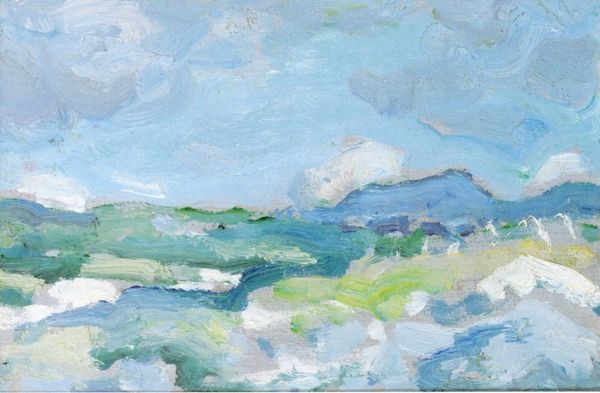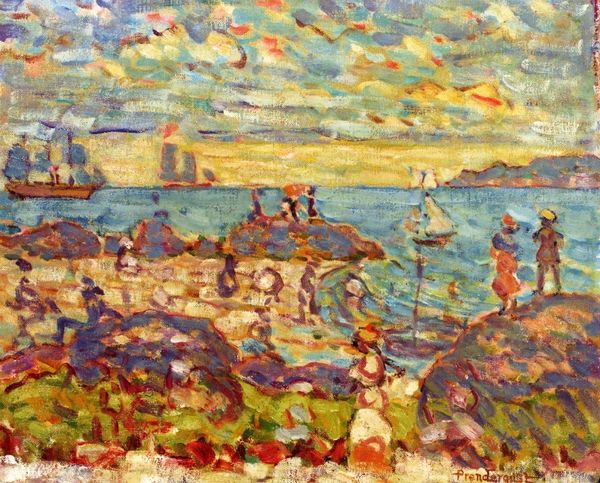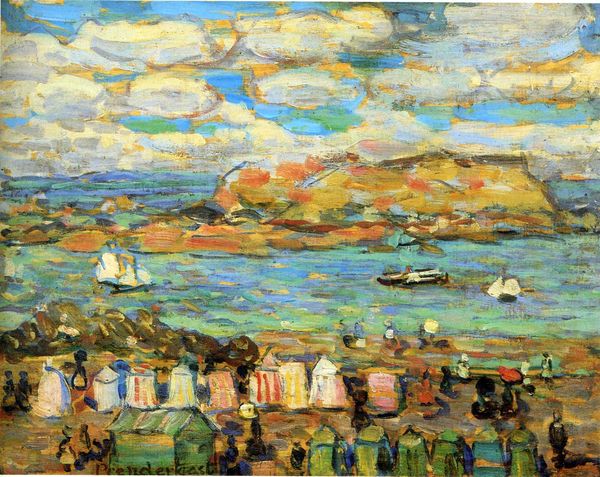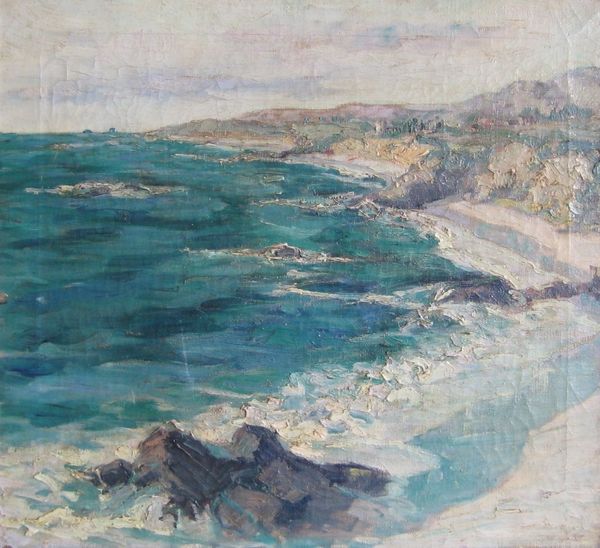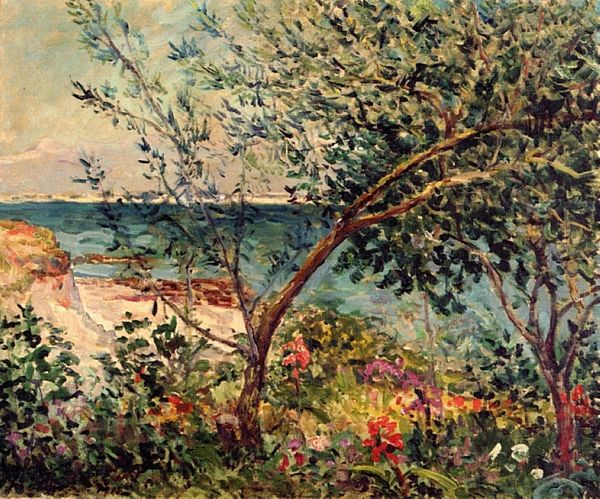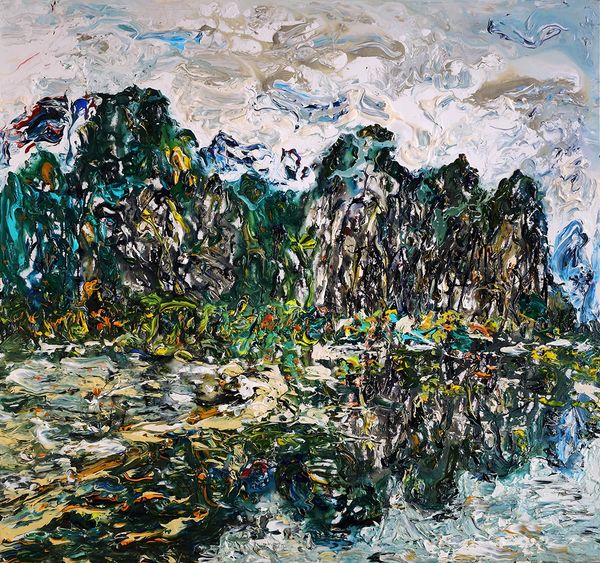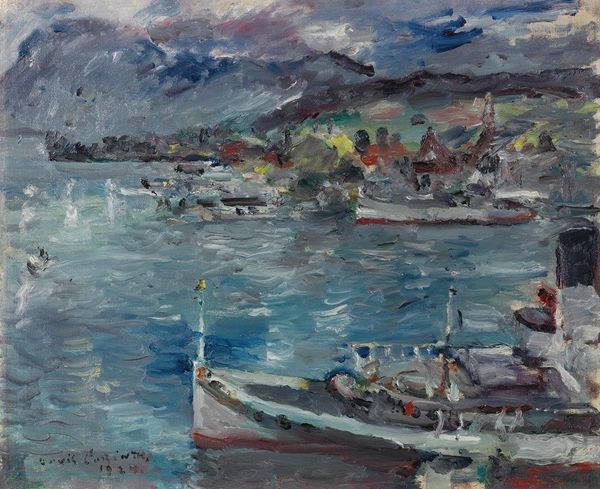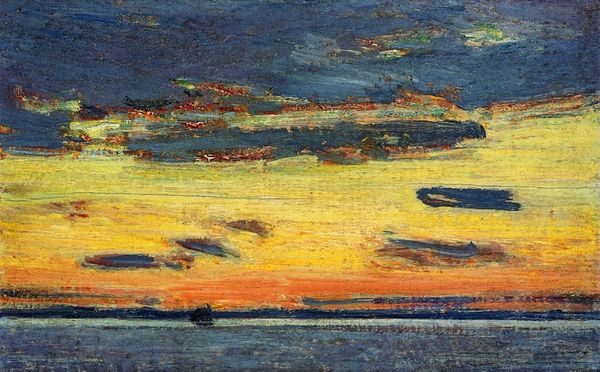
Copyright: Public Domain: Artvee
Editor: This watercolor, titled "St. Malo," created in 1907 by Maurice Prendergast, captures a hazy seaside town. I'm struck by the muted blues and greens, which create a sense of calmness. What are your thoughts on Prendergast's artistic choices in depicting this scene? Curator: Considering Prendergast’s use of watercolor here, it's crucial to consider its affordability and accessibility in the early 20th century. This wasn’t an artist working solely within the confines of oil painting, locked in the traditional studio. The very materiality of watercolor – its portability and immediacy – speaks to a democratic impulse, aligning with a changing art market and evolving social values. The perceived looseness of technique also allowed faster production and perhaps facilitated the mass appeal to larger audiences than the art previously displayed by wealthy families. Editor: That’s interesting. So, are you saying that Prendergast's choice of watercolor reflects a changing relationship between the artist and the art consumer? Curator: Exactly! The quick, expressive strokes, the visible process, that invites us to contemplate labor and the production itself. How does the ready availability of the water color medium allow the artists of his era to explore new perspectives for representation and the production of "Art"? How do such art tools inform Prendergast’s art style choices? Editor: It sounds like "St. Malo" is more than just a pretty picture, but an artistic statement about making art more available to ordinary people? Curator: Precisely. Looking closer at the production context and consumption makes us re-think art accessibility, as part of the art experience itself. It helps us really appreciate all it takes to bring Art to our communities. Editor: I never considered that angle before, so it has been interesting and informative for me. Thanks for sharing!
Comments
No comments
Be the first to comment and join the conversation on the ultimate creative platform.



